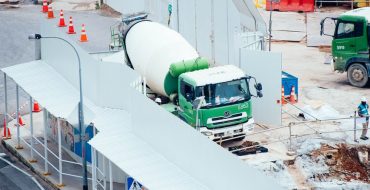
Concrete and cement industries brace for demand boom from $1 trillion infrastructure plan (CNBC)
Concrete is the foundation of just about everything. It’s used to construct buildings, highways, bridges, roads and more.
During the Covid-19 pandemic, concrete fell victim to the same phenomena impacting other essential materials and goods: snarled supply chains and labor shortages. And demand for concrete — and its essential ingredient, cement — appears to have only increased, after the Senate passed the $1 trillion infrastructure package to upgrade America’s roads, bridges and tunnels.

“In the short-term, we continue to have the supply chain difficulties, particularly in certain markets, and so prices are rising,” Anirban Basu, chief economist for the national construction industry trade association Associated Builders and Contractors, told CNBC. “So right now, apparently, supply is not rising up to meet demand.”
The industry also faces labor shortages of skilled workers and truck drivers. And the recent housing boom means more demand for concrete and cement, putting more pressure on the industry to increase capacity.
On top of all of this, there’s also a push to reduce the amount of carbon emissions that come from the industry. A study published by the National Academy of Sciences in 2019 estimates that global cement production accounts for 8% of global carbon emissions, making it the largest single industrial emitter of carbon dioxide.
Watch the video above to learn more about the cement-concrete supply chain and whether the U.S. industry can handle the coming demand from the new $1 trillion infrastructure spending plan.